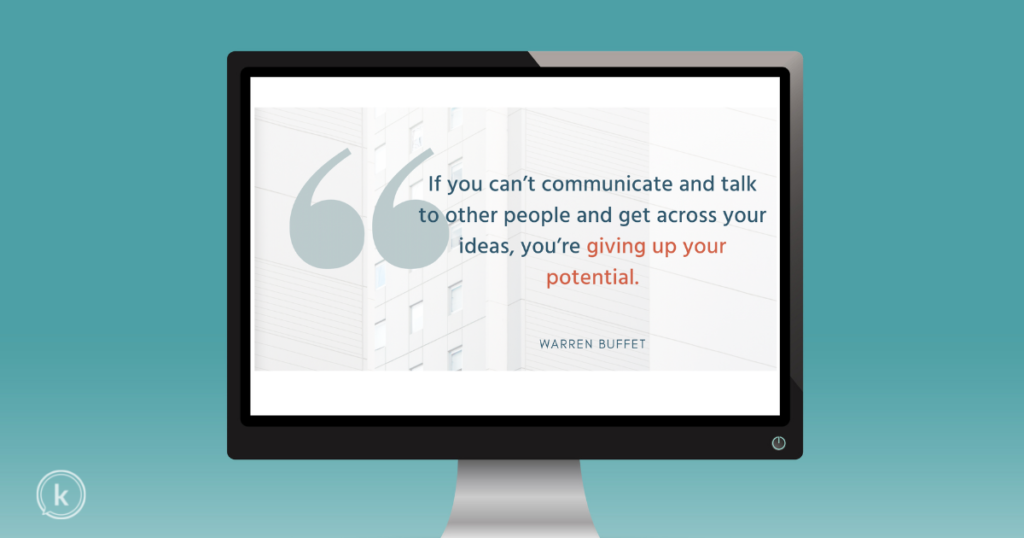On the other hand…
“You might be immobilized for five or six weeks,” my doctor said.
Ugh.
The possibility of not being able to use of my dominant hand for that length of time struck a chord of fear in this pessimist’s heart.
But my shoulder needed repair so I scheduled it—despite the potential downtime. (I had a similar surgery on my left shoulder about 10 years ago, the hilarious precursor to which I shared here.)
The good news: The surgery is now behind me and I had a better outcome than anticipated—I’m already in rehab.
The bad news: I still don’t have full use of my right/dominant arm.
Read MoreTop 3 pitch deck mistakes founders make—and how to avoid them
You have a great idea for a business venture.
The market is ripe.
You’ve sacrificed countless hours and dollars to bring it this far.
It’s time to secure funding.
And you’ve been given an opportunity to speak with would-be investors.
Would you wing it and just talk “off the cuff”?
Would you want to know if you were handicapping yourself with your deck or your presentation somehow?
Since 2018, I’ve been coaching entrepreneurs/founders through the public speaking aspect of preparing to pitch their ideas for funding. And I see the same mistakes again and again: entrepreneurs unnecessarily impeding the investors’ ability to see the merit of their idea. These are entirely preventable errors that are easily fixed, smoothing the path to successful fundraising efforts.
Read MoreWhen past hurt makes friendship feel scary
He addressed him as “friend.”
“Friend, do what you came to do.” (Matthew 26:50 ESV)
Jesus knew what his friend Judas—one of the close-knit group of disciples—was about to do: betray Him into the hands of His would-be killers. Most of us wouldn’t consider that kind of betrayal a mark of a friend.
Yet Jesus still calls Judas “friend.”
Puzzled by this, I wondered at first if it was just the translation I was reading. Nope, the word “friend” is in every translation I checked.
- Jesus replied, “Do what you came for, friend.” (NIV)
- Jesus said to him, “Friend, why are you here?” (RSV)
- But Jesus said to him, “Friend, why have you come?” (NKJV)
That’s because it’s in the original Greek version. In Greek, the word is ἑταῖρος.
According to Strong’s it means “a comrade:—fellow, friend.” So there’s really no trying to redefine the word the way Jesus used it.
Why does this matter to us?
Read MoreThe four ingredients that make a good presentation great
Every presentation has a purpose. (Or at least it should. Ahem.) And that purpose is to move or change the audience’s way of thinking about your topic… to persuade them to approve your idea or incite action. To do that requires the presenter to have clarity about their intended message and to present their content in a structured way that makes it easy for the audience to understand.
Having a clear narrative structure is foundational to giving a good presentation.
But to give a great presentation or talk—one that’s truly engaging, effective, and memorable—requires the use of an emotional structure layered in atop that narrative structure. The emotional structure is comprised of four elements:
Read MoreHow to make forgiveness a habit
Habits.
I’ve got some good ones: Flossing. Exercise. Budgeting and bank reconciliations.
And I’ve got some bad ones: Phone pick-ups. Dirty chai lattes. Returning shoes. (I have yet to diagnose the reason behind my lack of ability to commit to a shoe purchase.)
I’m intentional about habit-building. I have regular goal-setting sessions (not just at the beginning of the year) and often ask myself what habits and disciplines I need in order to achieve those goals.
Given this proclivity, it’s easy to see why my ears perked up when someone applied the word “habit” to Matthew 18:21-22.
Read MoreThe painful (and sometimes funny) discovery of blind spots
When the irony fell on us all at the same moment, we dissolved into gales of laughter.
Fourteen of us sat around the conference room table in Chicago. It was an opportunity to gather with colleagues; most of us had never met in person.
On the first morning of our two-day confab, we encircled that table, sharing what we hoped to glean from our time together. I voiced my desire to identify blind spots in my role as a trainer and facilitator; that desire was written on the glass-covered pink wall alongside the hopes expressed by my cohort.
And then we dug into the work: learning, discussing, asking questions, practicing, and receiving feedback. It. Was. Awesome. I am a better trainer because of the insightful comments of my colleagues. Our day’s efforts were rewarded with a hearty meal and an evening outing. My night concluded in a smaller group, waxing philosophical in oversized chairs in the hotel lobby.
When I made it to my room around midnight, I fell into bed exhausted and wholly satisfied.
But sleep didn’t come quickly. My introverted nature got the better of me after a full day of activity. Like an overstimulated toddler who didn’t get to nap on time, my nervous system was in hyperdrive and I laid awake until after 3am.
Read MoreHow to share full-screen slides and use presenter view for speaker notes—from a single screen
In a recent workshop, one of my clients justified their extremely wordy slides with the fact that they don’t have a second screen to project from in order to use speaker notes in presenter view…so their slides had to be their notes. Maybe you can relate?
Maybe you’re working from home and a second screen won’t fit your workspace (or is too costly to acquire).
Maybe you’re working from somewhere else altogether and don’t port a second screen with you. (Hawaii, anyone? A girl can dream…)
Maybe you’re standing in front of a prospective client or investor in person and are connecting to their projector to present.
If you don’t have a second screen, but need to share your slides in a presentation, you likely either (1) generate a set of notes that you can view separately (printed or in another application) or (2) do as my client did: create slides that function as your notes.
While it’s the common choice, the latter is far from ideal: Your audience will disconnect from you to read your slides instead of listening. And you’ll seem slow compared to their reading speed. But that’s another post.
Creating a separate document for notes is a reasonable solution: they’re accessible during the presentation and, when printed, are easy to mark up with cues for parts you need to emphasize. But what if paper notes are inaccessible (or give an air of unpreparedness)? You’ll have to constantly switch applications between an electronic version of the notes and the slides in order to advance them.
There is a better answer.
Read MoreThe other kind of love
Ah, February. The month commonly associated with love because of Valentine’s Day.
The stores flood with food, flowers, and apparel in various shades of red, pink, and chocolate. Oddly, I think it fills more of us with dread than delight: singles feel conspicuous in a culture focused on couples, and those in relationships feel the pressure to meet a social standard for expressing affection—both financially and emotionally.
As Americans, I think we’ve become too focused on romantic love. Perhaps even our church culture has become too myopic about it as well? Affinity groups for couples… sermons on marriage… and more. Please don’t mistake me, if we are married, we should absolutely fortify those relationships through whatever resources we have. Yet an overemphasis on couple-hood creates undue pain for our single friends and—perhaps more importantly—distorts our view of the Body.
Read MoreWhen you (really) should be on camera in virtual meetings
It was the final session of a week-long workshop. We’d crafted content. We’d prepped slides. Now we were practicing delivery. I pulsed the group: “What’s your biggest challenge presenting in the virtual setting?“
His answer: Presenting to people who aren’t on camera. Because it was such a drain on his energy.
The irony: Not only was this participant not on camera when he said it, he hadn’t been on camera all week. Not once.
Thankfully, I didn’t even have to point out the incongruity of his words with his actions. He owned it in his next sentence, saying he knew he needed to do better—for the sake of others—and flipped on his video.
We’ve all been on both sides of this equation:
- Utterly depleted from being on camera for so many meetings, day in and day out.
- Feeling challenged—maybe even frustrated—when we can’t see our colleagues during our presentation. (Have they left the building and are gallivanting around downtown Chicago? Bueller? Bueller?)
The impact of what’s becoming known as “self-presentation” is being documented with increasing regularity. It affects women and new hires disproportionately; we need to honor the need to be off camera for the sake of everyone’s mental health.
So what’s the answer for the presenter who doesn’t just appreciate a friendly face, but actually relies on the non-verbal communication of seeing their colleagues to know whether their message is being understood?
Here are my guidelines for being on (and off) camera for presenters and audiences, alike:
Read MoreBreaking bread instead of breaking fellowship
In the coming days (and weeks), many of us will gather with friends or family to share a holiday meal. We’ll put thought into who will encircle the table, extending invitations and setting a time to gather. We’ll put thought into the meal—possibly preparing favorite family recipes. And we might even put thought into what the table itself will look like… A centerpiece? Special plates or utensils? Candles?
But will we put thought into the conversation and the connection?
Or will we leave that to chance?
Read More









